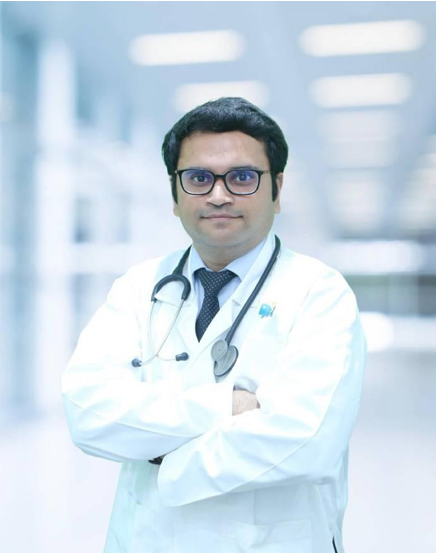
Envisage a bustling city, with one of the largest buildings being the liver. This organ, with its two lobes, proudly fills the upper right side of the abdomen under the protection of the rib cage. It works tirelessly to help you digest your food and rid your body of toxins. However, there are times when this mighty organ faces a formidable foe – primary liver cancer. This disease sees malignant cells forming within the liver tissues, potentially spreading from another organ to cause secondary liver cancer.
The seriousness of this diagnosis depends on various factors such as the location, size, spread, and whether it is primary or secondary, as well as one’s overall health. It’s a reminder that even the strongest of structures can face challenges, but with knowledge and care, we can navigate through them!
Types of liver cancer
Adult primary liver cancer mainly consists of hepatocellular carcinoma and bile duct cancer (cholangiocarcinoma). Hepatocellular carcinoma is the most common type of liver cancer among adults and ranks as the 3rd leading cause of cancer-related deaths globally.
Prevalence
Liver cancer is one of the leading causes of cancer-related deaths and ranks 6th globally. It is the 11th most common cancer in India. It has a male to female ratio of 4:1.
Know the signs and symptoms
These are the subtle hints of liver cancer: a hard lump on the right side just beneath the rib cage, a slight discomfort in the right upper abdomen, yellowing of the skin and whites of eyes, fatigue, nausea/vomiting, an unexplained weight loss, pale chalky bowel movements and dark urine, fever, etc. Watch out for these signs and seek help if needed.
What causes liver cancer?
Primary liver cancer, also known as hepatocellular carcinoma, often arises in livers that have been affected by factors such as alcohol abuse, chronic infections like hepatitis B and C, hemochromatosis (a hereditary disease associated with too much iron in the liver), and cirrhosis.
Interestingly, more than half of individuals diagnosed with primary liver cancer also have cirrhosis, a condition characterized by liver scarring commonly attributed to alcohol misuse. Additionally, liver cancer has been associated with obesity and fatty liver disease.
Other risk factors which have been shown to potentially increase the risk of developing liver cancer:
•Male gender
•Anabolic steroid use
•History of diabetes
•Inherited metabolic diseases
Main tests for liver cancer
If the GP recommends seeing a specialist for further investigation, one may undergo a series of tests and scans to screen for liver cancer. These evaluations may consist of blood tests such as AFP, CA 19.9 and PIVKA II, imaging scans such as an ultrasound, CT or MRI; as well as a biopsy to analyse liver cells for signs of cancer.
What affects liver cancer prognosis (chance of recovery)?
Upon diagnosis of liver cancer, the outlook and available treatment choices are contingent upon various factors: the cancer’s stage, liver functionality, overall health and presence of cirrhosis. Detecting and addressing liver cancer promptly could potentially avert fatal outcomes.
Various Liver Cancer Treatments
●Surveillance:Used for lesions smaller than 1 cm found during screening
●Surgery:To remove the part of the liver where cancer is found
●Liver transplant
●Ablation therapy:Removes or destroys tissue
●Embolization therapy:Used for people who cannot have surgery or ablation therapy. There are two main types: Transarterial Embolization (TAE) and Transarterial Chemoembolization (TACE)
●Targeted therapy:Uses drugs to identify and attack specific cancer cells
●Immunotherapy:Uses the person’s immune system to fight cancer
●Radiation therapy
Prevention for Protection
Taking steps to prevent cancer can significantly reduce the likelihood of developing the disease. By implementing preventive measures, we can decrease the incidence of cancer within a community or population, ultimately leading to fewer cancer-related deaths. Prevention involves steering clear of risk factors and enhancing protective factors. The following are protective factors for liver cancer:
•Receiving the hepatitis B vaccine
•Seeking treatment for chronic hepatitis B infection
•Minimizing exposure to foods containing aflatoxin B1
Be aware!!
Each October, we take the time to recognize Liver Cancer Awareness Month. It’s a crucial health observance as nearly 300 million individuals worldwide are living with hepatitis B, putting them at a higher risk for developing liver cancer. Chronic viral hepatitis infections, including hepatitis B and hepatitis C, account for about 80% of all liver cancers.
For those with risk factors for liver cancer, regular medical monitoring, liver cancer surveillance, antiviral treatment if needed and adopting healthy lifestyle choices can help reduce the risk of developing liver cancer. It’s a reminder of the importance of taking proactive steps to safeguard our health and well-being.
References:
- https://www.nhs.uk/conditions/liver-cancer/what-is-liver-cancer/
- https://gco.iarc.who.int/media/globocan/factsheets/populations/356-india-fact-sheet.pdf
Disclaimer:
The information provided is for educational purpose only and does not substitute medical advice from your physician. Roche makes no representation with respect to any treatment action or application of medication through this educational endeavor and therefore will not be liable of any direct or indirect damage arising there from. Please consult your treating physician for any further advice and treatment.
Input Code: M-IN-00005179,
Valid Upto: This input is not valid after 25th October 2025
Issued in Public Interest by: Roche
Products (India) Pvt. Ltd. 146-B, 166 A, Unit No. 7, 8, 9, 8th Floor, R City
Office, R City Mall, Lal Bahadur Shastri Marg, Ghatkopar, Mumbai – 400 086.
Tel: +91(22)50457300, Fax: +91(22)50457301


